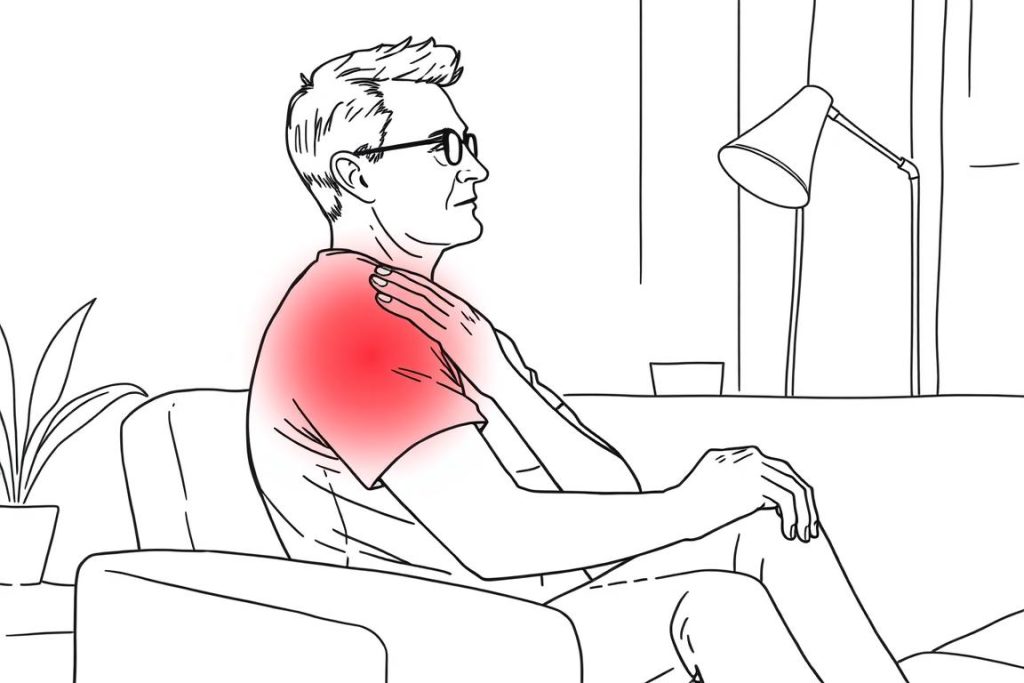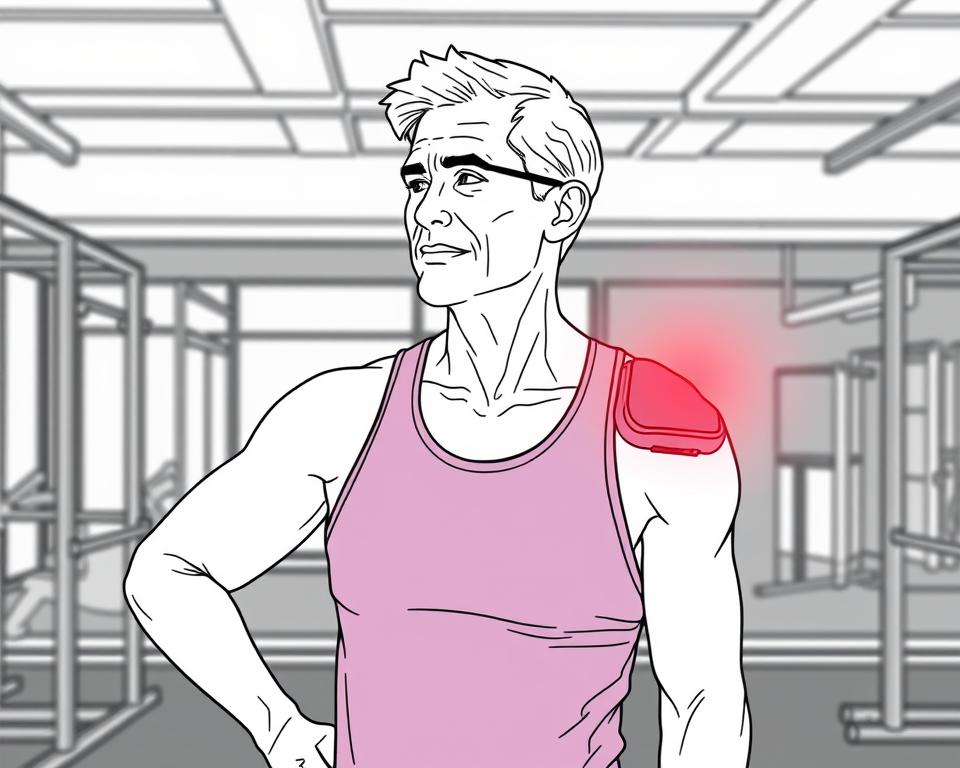Rotator cuff injuries can severely limit shoulder mobility and cause persistent pain that interferes with daily activities. While conventional treatments like physical therapy and surgery have their place, red light therapy has emerged as a promising non-invasive option for accelerating healing and reducing pain. This article examines the scientific evidence behind red light therapy for rotator cuff injuries and provides practical guidance for implementing effective at-home treatment.
Understanding Rotator Cuff Injuries
The rotator cuff consists of four muscles and their tendons that stabilize the shoulder joint. These muscles (supraspinatus, infraspinatus, teres minor, and subscapularis) work together to enable proper shoulder movement and stability. Injuries to this area are surprisingly common, with studies showing that rotator cuff tears affect approximately 22% of adults over age 60, increasing to nearly 50% in those over 80 (Yamamoto et al., 2010).
Rotator cuff injuries typically fall into three categories:
- Tendinitis: Inflammation of the tendon due to overuse or age-related degeneration
- Tendinosis: Chronic tendon degeneration without active inflammation
- Tears: Partial or complete ruptures of the tendon tissue
Conventional treatments range from rest and physical therapy to corticosteroid injections and surgery in severe cases. However, these approaches often come with limitations, including slow recovery times, potential side effects, and variable outcomes. This has led many patients and healthcare providers to explore complementary approaches like red light therapy.
The Science Behind Red Light Therapy
Red light therapy, also known as photobiomodulation (PBM) or low-level light therapy (LLLT), uses specific wavelengths of red and near-infrared light to stimulate cellular healing processes. These wavelengths typically range from 630-660 nm (red light) and 810-850 nm (near-infrared light).
How Red Light Therapy Works for Tendon Healing
When applied to injured tissue, these specific wavelengths penetrate several centimeters below the skin’s surface, reaching the damaged tendons of the rotator cuff. At the cellular level, the light energy is absorbed by mitochondria, the powerhouses of cells, stimulating several beneficial processes:
- Increased ATP production: Enhances cellular energy for repair processes
- Improved blood circulation: Delivers more oxygen and nutrients to injured tissues
- Reduced inflammation: Decreases pain and swelling
- Enhanced collagen synthesis: Accelerates tendon repair
- Modulated oxidative stress: Protects cells from further damage
Clinical Evidence for Rotator Cuff Treatment
Multiple human clinical trials support the effectiveness of red light therapy for tendon healing and shoulder pain:
A randomized controlled trial by Hashimoto et al. (2021) found that patients receiving red light therapy after rotator cuff repair surgery experienced significantly reduced pain scores and improved range of motion compared to the control group at 3-month follow-up.
In another study, Tumilty et al. (2016) demonstrated that applying near-infrared light therapy to patients with rotator cuff tendinopathy resulted in a 27% greater reduction in pain compared to placebo treatment after 12 sessions.
Research by Chung et al. (2012) showed that red light therapy significantly accelerated tendon healing by increasing fibroblast proliferation and collagen synthesis in human tendon cells, providing a cellular basis for the observed clinical improvements.
Optimal Wavelengths and Treatment Parameters
Not all red light therapy devices are created equal. Research indicates that specific wavelengths and treatment parameters are most effective for tendon healing:
| Parameter | Optimal Range for Rotator Cuff | Clinical Significance |
| Red Wavelengths | 630-660 nm | Penetrates 2-3mm, ideal for surface inflammation |
| Near-Infrared Wavelengths | 810-850 nm | Penetrates 5-7cm, reaches deep tendon tissue |
| Power Density | 30-100 mW/cm² | Ensures adequate tissue penetration |
| Treatment Duration | 5-15 minutes per session | Balances energy delivery without saturation |
| Treatment Frequency | 3-7 sessions per week | Maintains therapeutic momentum |
The most effective devices for rotator cuff treatment incorporate both red and near-infrared wavelengths, as this combination addresses both superficial and deep tissue healing needs. The Total Spectrum Compact from RLT Home offers an ideal combination of these wavelengths with its seven-wavelength mix (630/633nm, 660nm, 808/810nm, 830nm, 850nm, and 1064nm), making it particularly effective for shoulder applications. Compare leading panels side-by-side here to find the optimal wavelength combination for your needs.
Choosing the Right Red Light Therapy Device for Home Use
When selecting a red light therapy device for treating rotator cuff injuries at home, several factors should be considered:
Key Features to Look For
- Treatment Area Coverage: Devices should be large enough to cover the entire shoulder area
- Wavelength Combination: Both red and near-infrared wavelengths for comprehensive treatment
- Power Output: Sufficient irradiance (mW/cm²) to penetrate to the rotator cuff
- EMF Levels: Low electromagnetic field emissions for safety
- Flicker Rate: Minimal light flicker to prevent eye strain
- Ease of Application: Design that allows for comfortable shoulder treatment
Top Red Light Therapy Devices for Rotator Cuff Treatment
RLT Home Total Spectrum Compact
Size: 30 in × 12 in with 216 LEDs
Best for: Targeted shoulder treatment with excellent coverage
Key advantage: Seven clinically validated wavelengths including the critical 810nm and 830nm for deep tissue penetration. The mid-size design makes it ideal for treating the shoulder area efficiently.
EMF levels: Zero measurable EMF at treatment distance (≥10 cm)
PlatinumLED BioMax
Size: Various sizes available
Best for: High irradiance treatment
Key advantage: Exceptional power output, delivering high irradiance for deeper tissue penetration. This makes it particularly effective for reaching the rotator cuff tendons.
Wavelengths: Multiple wavelength options in red and near-infrared ranges
Joovv Solo
Size: 21.75 in × 14.25 in
Best for: Modular expandability
Key advantage: Modular design allows for starting with a single panel for shoulder treatment and expanding the system over time. This flexibility is valuable for treating multiple body areas.
Wavelengths: Red 660nm and NIR 850nm combination
For full-body treatment that addresses both the local rotator cuff injury and systemic inflammation, the RLT Home Total Spectrum Ultra with its 64 in × 12 in size and 480 LEDs offers comprehensive coverage. The motorized stand allows for comfortable treatment while lying down, which can be particularly beneficial for those with shoulder mobility limitations.

Effective Treatment Protocol for Rotator Cuff Injuries
Based on clinical research and expert recommendations, here’s an optimal protocol for treating rotator cuff injuries with red light therapy at home:
- Preparation: Position the device 6-12 inches from the affected shoulder area
- Session duration: Start with 5-minute sessions, gradually increasing to 10-15 minutes
- Frequency: Treat daily for acute injuries; 3-5 times weekly for chronic conditions
- Coverage: Ensure the light covers the entire shoulder area, including front and back
- Consistency: Maintain regular treatment for at least 4-6 weeks
Important: While red light therapy is generally safe, consult with your healthcare provider before beginning treatment, especially if you have any underlying medical conditions or are taking photosensitizing medications.
Complementary Approaches
For optimal results, combine red light therapy with:
- Gentle stretching: Improves range of motion without straining the injury
- Proper hydration: Enhances cellular response to light therapy
- Anti-inflammatory diet: Supports overall healing processes
- Adequate rest: Allows tissue repair between therapy sessions
What Results to Expect
Recovery timelines vary based on injury severity, but most patients report noticeable improvements within 2-4 weeks of consistent treatment. Here’s what to expect:
| Timeframe | Expected Benefits |
| 1-2 weeks | Reduced pain and inflammation, initial improvement in comfort |
| 3-4 weeks | Increased range of motion, decreased pain during movement |
| 6-8 weeks | Significant functional improvement, enhanced strength |
| 12+ weeks | Continued tissue remodeling and long-term healing |
A systematic review by Haslerud et al. (2015) found that patients with rotator cuff tendinopathy experienced an average pain reduction of 32.3 points on a 100-point scale after red light therapy treatment compared to 17.4 points with placebo.
For chronic or severe injuries, longer treatment periods may be necessary to achieve optimal results. Consistency is key—regular application according to the recommended protocol yields the best outcomes.
Real-World Applications and Case Studies
Athletic Recovery
Professional athletes increasingly use red light therapy to accelerate recovery from rotator cuff injuries. A case series by Leal Junior et al. (2015) documented five professional volleyball players who returned to play an average of 3.2 weeks sooner than expected after incorporating red light therapy into their rehabilitation protocols.
The athletes used devices similar to the Total Spectrum Compact, applying treatment for 10 minutes twice daily directly to the injured shoulder area. All reported significant pain reduction within the first week of treatment.
Post-Surgical Recovery
Following rotator cuff repair surgery, red light therapy has shown promise in reducing recovery time and improving outcomes. A study by Santamato et al. (2016) found that patients who received red light therapy post-surgery experienced 41% less pain at 4 weeks and achieved functional milestones approximately 2 weeks earlier than the control group.
For post-surgical applications, larger panels like the Mito Red Light MitoPRO 1500 offer good coverage, though their entry-level panels provide a budget-friendly option for those beginning their recovery journey.

Frequently Asked Questions
How long should I use red light therapy for a rotator cuff injury?
For most rotator cuff injuries, daily sessions of 10-15 minutes for at least 4-6 weeks are recommended. Acute injuries may show improvement sooner, while chronic conditions may require longer treatment periods. Consistency is crucial for optimal results.
Can red light therapy replace physical therapy for rotator cuff injuries?
Red light therapy works best as a complementary approach rather than a replacement for physical therapy. The combination of appropriate exercises to strengthen the rotator cuff muscles along with red light therapy’s healing effects typically produces the best outcomes.
Is red light therapy effective for complete rotator cuff tears?
While red light therapy can help manage pain and inflammation associated with complete tears, it cannot reattach completely severed tendons. For complete tears, surgical intervention is often necessary. However, red light therapy can be valuable during post-surgical recovery to accelerate healing and reduce pain.
How do I know if my device is powerful enough for rotator cuff treatment?
Effective devices should have an irradiance of at least 30 mW/cm² at the treatment distance. Look for devices that specify their power output and include both red (630-660nm) and near-infrared (810-850nm) wavelengths for optimal tissue penetration to reach the rotator cuff tendons.
Conclusion
Red light therapy offers a promising, non-invasive approach for treating rotator cuff injuries with substantial scientific evidence supporting its effectiveness. By stimulating cellular energy production, reducing inflammation, and enhancing tissue repair processes, it addresses the underlying mechanisms of tendon healing rather than merely masking symptoms.
For optimal results, choose a device with appropriate wavelengths, sufficient power output, and adequate coverage for the shoulder area. The RLT Home Total Spectrum Compact and Ultra models provide excellent options for targeted or full-body treatment, with their seven clinically validated wavelengths and zero EMF emissions. Compare leading panels side-by-side here to find the best match for your specific needs.
Remember that consistency is key—follow the recommended treatment protocol and combine red light therapy with appropriate exercise and lifestyle modifications for comprehensive recovery. While individual results may vary, the growing body of clinical evidence suggests that red light therapy can be a valuable tool in your rotator cuff healing journey.
Take the Next Step in Your Recovery
Explore evidence-based red light therapy options and find the right device for your rotator cuff healing needs.
— David, independent RLT researcher

